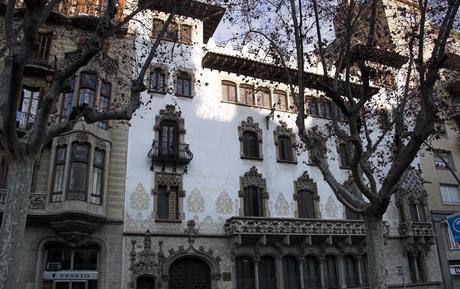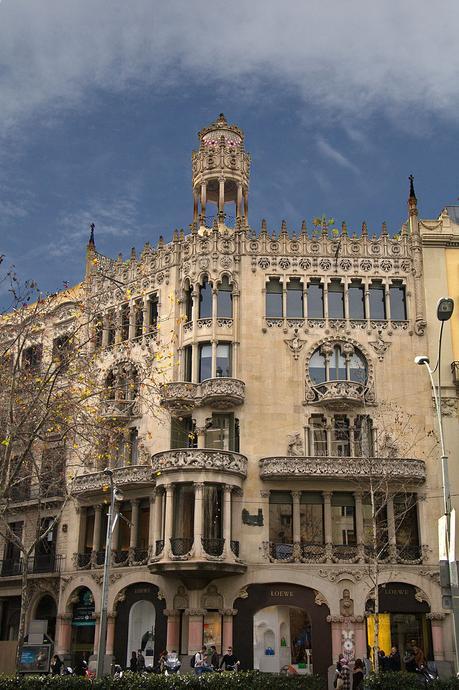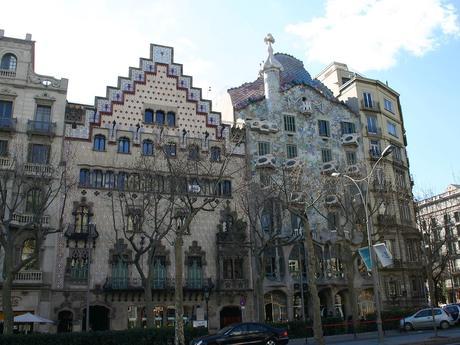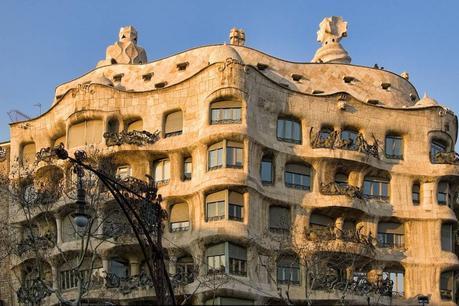Barcelona's Quadrat d'Or (Golden Square) is an area in the Eixample (Extension) neighborhood between Carrer Aribau and Passeig de Sant Joan, with the famous shopping street Passeig de Gracia at its heart. It is an open-air museum of the late 19th and early 20th centuries Catalan Art Nouveau movement known as Modernisme.

Competition among the city's bourgeoisie funded the architectural artform by commissioning ornate and decorative homes, leaving a rich heritage of buildings lush with floral designs, stained glass and wrought iron. Discover stunning works by some of Catalonia's most eminent architects, such as Puig i Cadafalch, Domènech i Montaner, and of course the great Antoni Gaudí himself.
What to See in the Barcelona´s Golden Square?

The Golden Square is packed full of fascinating things to do and see. It is home to high-end fashion shops, captivating art galleries, trendy bars and clubs, and offers an extensive array of choices for fine dining. The Egyptian Museum, the Antoni Tàpies Foundation, and the Museu de Modernisme de Barcelona are all among walking distance from each other. It is impossible not to have an enriching experience when strolling down the area's broad, tree-lined streets. It also happens to be a great place to see some of the best Gaudí buildings in Barcelona:
Casa Batlló
Nestled in next to Casa Amatller by Puig i Cadafalch and Casa Lleó Morera by Domènech i Montaner, Casa Batlló is Gaudí's brilliant reconstruction of an already existing building on Passeig de Gracia completed in 1906. Known to locals as the "House of Bones", its balconies resemble gaping skulls, while the roof is said to represent the scaly backbone of the dragon slain by Saint George. The shimmering stained glass and wavy, colorful facade will capture the imagination of passersby, perhaps bringing to mind a rippling sea.

The building is an exhibition of over 5,000 square meters (53,000 square feet) of what Gaudí's imagination looks like when given complete freedom to roam. You'll find that right angles and corners are scarce in this fantastical masterpiece. Climb the grand, spiralling staircase; peer down the brilliant blue and white air shaft in the center of the building, which maximizes exposure to the generous sunlight for which the Mediterranean is famous. Take in the awe-inspiring views from the mythical rooftop, also a great photo opportunity!
Imagine what it must have been like to live in this whimsical home at the turn of the last century. Then, when you're ready for your mind to be blown yet again, visit la Pedrera, just a hop, skip and a jump away!
La Pedrera
Another showcase of the opulence of the time, La Pedrera is the nickname given to Casa Milà by locals, suggesting its resemblance to a stone quarry. Ahead of its time, it was highly criticized and turned owners Roser Segimon and Pere Milà into the laughing stock of the community. The building, made a Unesco World Heritage Site in 1984, was a thorn in the sides of the neighboring homeowners, who feared the odd construction would lower property values in the area.

The house suffered at the hands of new owners following the death of Pere Milà. It was divided into multiple apartments and housed offices as well as a bingo hall. It wasn't until 1987 that the building was rescued from ruin and restoration began. In 1990, the main floor opened, where you can now see what one of the original modernist rooms was like, complete with period furniture and decorative elements designed by the master architect.
True to form, Gaudí designed the self-supporting stone facade in one continuous curve that bends around the corner of Passeig de Gracia and Carrer de Provença. It is built around two internal courtyards to let in as much natural light as possible, always a concern in a dense, compact city like Barcelona. The attic now houses Espai Gaudi where you can get a deeper understanding of the workings of the artist's mind through models and plans.
The highlight of the building, however, is the terrace. Technical aspects like stairway exits, ventilation shafts and chimneys are all cleverly disguised as stone warriors that appear to be guarding the rooftop. It offers a great bird's-eye view of the interior courtyards, as well as another spectacular view of the city.
Be Prepared and Book Ahead
Lines do tend to form at these popular, essential Gaudí sites, so make sure to book your Casa Batllo tickets and La Pedrera tickets at ticketsbarcelona.com to make the most of your visit.
